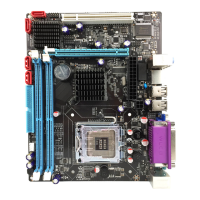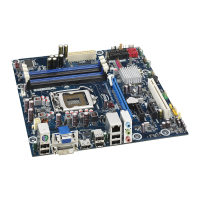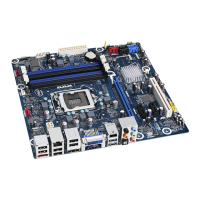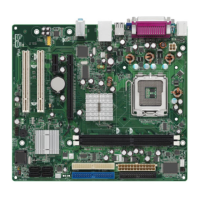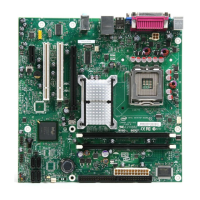BIOS Setup Program
51
Table 20. Boot Menu (continued)
Feature Options Description
First Boot Device
Second Boot Device
Third Boot Device
Fourth Boot Device
Fifth Boot Device
Sixth Boot Device
Seventh Boot Device
Eighth Boot Device
• Floppy
• ARMD-FDD (Note 1)
• ARMD-HDD (Note 2)
• IDE-HDD
• ATAPI CD-ROM
• Intel UNDI, PXE 2.0
(build 071) (Note 3)
• Disabled
Specifies the boot sequence from the available
devices. To specify the boot sequence:
1. Select the boot device with <↑> or <↓>.
2. Press <Enter> to set the selection as the
intended boot device.
The operating system assigns a drive letter to each
boot device in the order listed. Changing the order
of the devices changes the drive lettering.
The default settings for the first through eighth boot
devices are, respectively:
• Floppy
• IDE-HDD
• ATAPI CD-ROM
• Intel UNDI, PXE 2.0 (build 071)
• Disabled
• Disabled
• Disabled
• Disabled
IDE Drive Configuration:
Primary Master IDE
Primary Slave IDE
Secondary Master IDE
Secondary Slave IDE
• 1st IDE
• 2nd IDE
• 3rd IDE
• 4th IDE
Specifies the boot sequence of the IDE devices
when, in the preceding feature, boot devices are set
to IDE-HDD. If the system is unsuccessful at
booting from the first IDE device, the BIOS will
return to the preceding feature to determine which
device to attempt booting from next. The system
will attempt to boot from the second IDE device only
if, in the preceding feature, another boot device is
set to IDE-HDD.
To specify the IDE boot sequence:
1. Select the boot device with <↑> or <↓>.
2. Press <Enter> to set the selection as the
intended boot device.
The default settings for the first through fourth IDE
devices are, respectively:
Primary Master IDE
Primary Slave IDE
Secondary Master IDE
Secondary Slave IDE
Notes:
1. ARMD-FDD = ATAPI removable device - floppy disk drive
2. ARMD-HDD = ATAPI removable device - hard disk drive
3. UNDI = Universal Network Interface Card (NIC) Driver Interface
PXE = Pre-boot eXecution Environment

